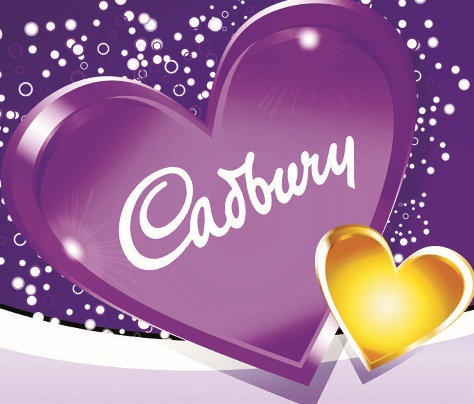In collaboration with Convergence, VOICE OF ASIA is proud to present timeless articles from the archives, reproduced digitally for your reading pleasure. Originally published in Convergence Volume 17 in 2013, we present this story on the legacy of Cadbury, the chocolate brand known the world over.
A family enterprise that has expanded worldwide, Cadbury is a name that has become synonymous with chocolate, catering not only to the world’s sweet tooth but also to its heart. In this month in which Romance is celebrated, Convergence takes a look at the second-largest confectionary company in the world.
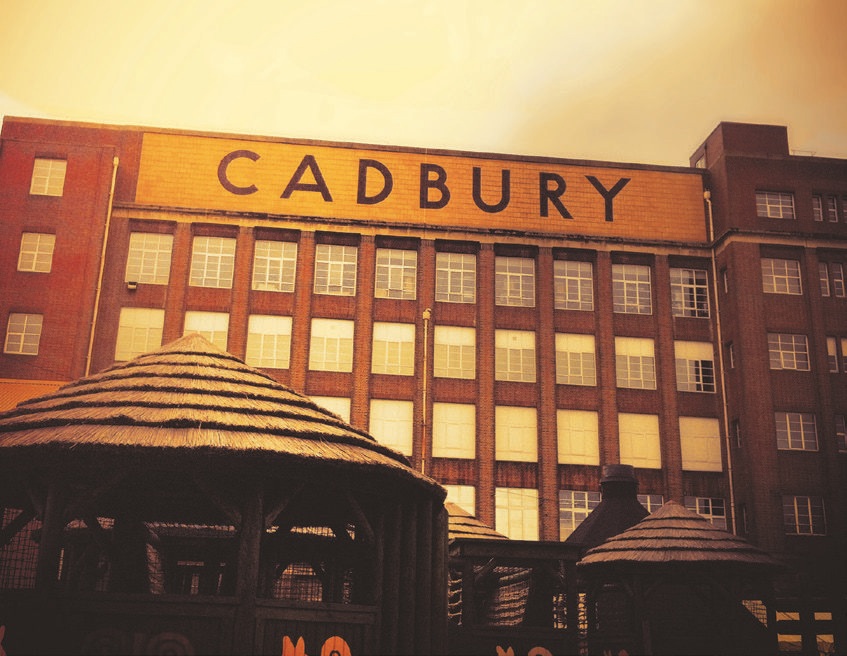
Starting Out
John Cadbury was born in Birmingham in 1801 to a wealthy Quaker family. Quakers in the early 19th century were not allowed to join the military or attend university, so John Cadbury turned his eyes and energies to the only other opportunity available: business.
In 1824, when he was 22 years old, John Cadbury opened a grocer’s shop next to his father’s drapery and silk business in the then fashionable part of birmingham, and sold tea, coffee and cocoa, and mustard which he prepared himself.
In 1831, after deciding to concentrate on the manufacturing and marketing of cocoa, he moved to a four-storey factory warehouse and using a mortar and pestle, produced the cocoa and drinking chocolate which he mostly sold to the higher echelons of society as they could afford it. Chocolate had been introduced into england in the 1650s but because cocoa beans had to be imported from South and Central America and the West Indies, they were expensive.
Absolutely Pure
By 1842, he was producing and selling 11 kinds of cocoa and 16 kinds of drinking chocolate with added sugar. The earliest preserved price list shows that one could buy drinking chocolate as either powders or pressed cakes. With the latter, customers scraped a little into a saucepan and added hot milk or water.
John Cadbury established himself as one of the leading cocoa and drinking chocolate traders in Birmingham and the popularity and growing sales of his cocoa and drinking chocolate of ‘superior quality’ determined the future direction of the business.
In 1847, he rented a larger factory in the centre of Birmingham and went into partnership with his brother Benjamin. This was also the year Fry’s chocolate factory in bristol, a strong competitor of the Cadbury Brothers of Birmingham, moulded the first ever chocolate bar for widespread consumption.
In 1853, the brothers opened a retail outlet in London and were granted the Queen’s Warrant as ‘manufacturers of cocoa and chocolate to Queen Victoria’ the following year. However, by 1860, the brothers had parted ways and the mantle of leadership was passed on to John Cadbury’s sons – 25 year-old Richard and 21 year-old George.
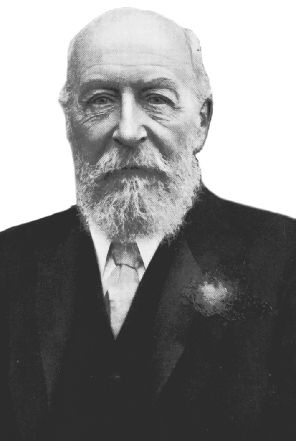
They purchased a new cocoa press from a Dutch manufacturer in 1866 and using an innovative processing technique, created pure unadulterated cocoa, with no starchy ingredients or cocoa butter, a British first. There was no need to add flour and Cadbury’s new cocoa essence was advertised as ‘Absolutely pure… therefore Best’. It was this essence which placed the small British company on the world map.
Easter Eggs
The Cadbury Brother’s trade was not solely dependent on the cocoa essence. The plentiful supply of cocoa butter left over after the cocoa was pressed, made possible the production of a wide variety of new kinds of ‘eating chocolate,’ leading to the development of the smooth creamy chocolate produced today. Although edible chocolates were first introduced by Cadbury in 1849, the product was not as attractive as those they sell now.
Following the introduction of the cocoa press, the quality of the chocolates made by the company during the 1870s saw Cadbury breaking the monopoly which French producers had previously enjoyed in the british Market. On top of this success, in 1873 the brothers recruited Master confectioner Frederic Kinchelman who shared his secret recipe and production techniques with Cadbury workers. This resulted in production of caramels, bonbons, chocolate covered nougats and a number of other types of confectionery.
By 1875, Cadbury had introduced their first Easter egg. It was made from dark chocolate, had a smooth, plain surface and was filled with sugar-coated chocolate drops known as ‘dragees’. Later, eggs were decorated and had their plain shells enhanced with chocolate piping and marzipan flowers. Twenty-two years later came their first milk chocolate bar, but it was less successful, being dry and not sweet enough.
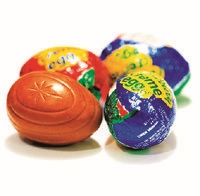
Cadbury’s “fancy chocolates” or assortments as they are now called, were sold in decorated boxes with small pictures that children could cut out to stick into scrapbooks. using his own children as models, flowers and scenes from his travels, Richard Cadbury applied his considerable artistic talent to paint more ambitious and attractive box designs. These were the first British-made fancy chocolate boxes and were very popular. Some of the original ones still exist.
Elaborate chocolate boxes were much prized as special gifts by the later Victorians as they could later be used as trinket or button boxes. Designs ranged from superb velvet-covered caskets with bevelled mirrors and silk-lined jewel boxes to pretty boxes with pictures on the lid. Their popularity continued until their disappearance during the second World War. Victorian and Edwardian chocolate boxes are now collector’s items.
Bournville
In September 1879, production began in the ‘factory in a garden’ after Richard and Charles both felt the need to find better accommodation for the factory and better housing for their workers. The previous year, they had acquired the Bourn Brook estate, comprising 14.5 acres four miles from the centre of Birmingham, and renamed it Bournville.
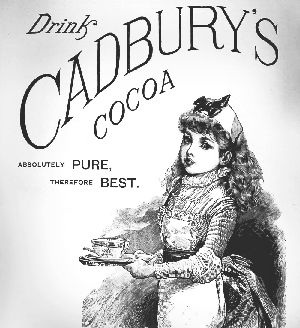
There were practical business reasons why this site was appealing: canal and rail links, roads and water supply. Also, the workers could live in far better conditions than the crowded slums of Birmingham. by 1893, additional acres had been purchased making the total land area 330 acres, and several staff houses had been built.
Following Richard Cadbury’s death in 1899, the business became a private limited company. George Cadbury became chairman of the new board of Cadbury brothers Limited with Barrow and William A. Cadbury, sons of Richard and two of his own sons, Edward and George Junior, his fellow directors. At that time the Bournville factory had more than 2,600 employees.
Cadbury Today
The world popular Cadbury’s Dairy Milk was launched in 1905. Today, it is Cadbury’s highest selling chocolate bar worldwide, with a bar of Dairy Milk being sold every two seconds. Cadbury Bournville Chocolate was introduced in 1908, Milk Tray in 1915, and Flake in 1920, while Crème eggs, Crunchie and Roses were marketed in 1923, 1929 and 1938 respectively. More recent products include the 2001 Brunchbar, Dream and Snowflake.
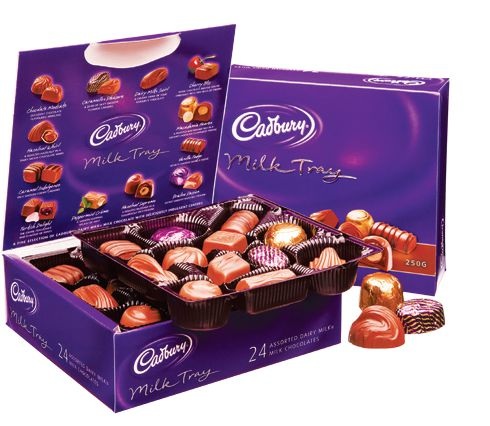
Among the many changes that Cadbury has undergone over the years include a merger with J. S. Fry & Sns in 1919, creating the British Cocoa and Chocolate Company, and becoming an international company after it opened its first office in Tasmania. it also merged with drinks company Schweppes in 1969 forming Cadbury Schweppes but split from Schweppes in 2008.
Today, John Cadbury’s almost 200-year legacy is found and enjoyed all over the world by those who delight in the taste of rich, creamy chocolate. Whether as a gift of love for Valentine’s Day or just a sweet indulgence, there is a sumptuous range of tempting treats to choose from.


